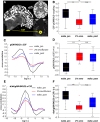Impaired Macroscopic Cerebrospinal Fluid Flow by Sevoflurane in Humans during and after Anesthesia
- PMID: 39786916
- PMCID: PMC11893005
- DOI: 10.1097/ALN.0000000000005360
Impaired Macroscopic Cerebrospinal Fluid Flow by Sevoflurane in Humans during and after Anesthesia
Abstract
Background: According to the model of the glymphatic system, the directed flow of cerebrospinal fluid (CSF) is a driver of waste clearance from the brain. In sleep, glymphatic transport is enhanced, but it is unclear how it is affected by anesthesia. Animal research indicates partially opposing effects of distinct anesthetics, but corresponding results in humans are lacking. Thus, this study aims to investigate the effect of sevoflurane anesthesia on CSF flow in humans, both during and after anesthesia.
Methods: Using data from a functional magnetic resonance imaging experiment in 16 healthy human subjects before, during, and 45 min after sevoflurane monoanesthesia of 2 volume percent (vol%), the authors related gray matter blood oxygenation level-dependent signals to CSF flow, indexed by functional magnetic resonance imaging signal fluctuations, across the basal cisternae. Specifically, CSF flow was measured by CSF functional magnetic resonance imaging signal amplitudes, global gray matter functional connectivity by the median of interregional gray matter functional magnetic resonance imaging Spearman rank correlations, and global gray matter-CSF basal cisternae coupling by Spearman rank correlations of functional magnetic resonance imaging signals.
Results: Anesthesia decreased cisternal CSF peak-to-trough amplitude (median difference, 1.00; 95% CI, 0.17 to 1.83; P = .013) and disrupted the global cortical blood oxygenation level-dependent and functional magnetic resonance imaging-based connectivity (median difference, 1.5; 95% CI, 0.67 to 2.33; P < 0.001) and global gray matter-CSF coupling (median difference, 1.19; 95% CI, 0.36 to 2.02; P = 0.002). Remarkably, the impairments of global connectivity (median difference, 0.94; 95% CI, 0.11 to 1.77; P = 0.022) and global gray matter-CSF coupling (median difference, 1.06; 95% CI, 0.23 to 1.89; P = 0.008) persisted after re-emergence from anesthesia.
Conclusions: Collectively, the authors' data show that sevoflurane impairs macroscopic CSF flow via a disruption of coherent global gray matter activity. This effect persists, at least for a short time, after regaining consciousness. Future studies need to elucidate whether this contributes to the emergence of postoperative neurocognitive symptoms, especially in older patients or those with dementia.
Copyright © 2025 The Author(s). Published by Wolters Kluwer Health, Inc., on behalf of the American Society of Anesthesiologists.
Conflict of interest statement
The authors declare no competing interests.
Figures




References
MeSH terms
Substances
LinkOut - more resources
Full Text Sources

